I once had a patient, an older patient. She grew up on a farm. Her dad worked hard and would occasionally suffer from heel pain. For treatment he would lie on the trailer bed and have his wife hit his heel repeatedly with a mallet until the pain was gone. For all of you anchorman fans out there, in the words of Brian Fantana, “They have done studies, 60 % of the time, this works every time”. This sounds barbaric, I know, but it was a different time and medicine back then isn’t what it is now. Over the next few paragraphs, I’ll talk about what plantar fasciitis is, how someone can develop plantar fasciitis, as well as what we do in PT to treat this and how you can treat it yourself at home.
What is it?
Plantar fasciitis in its simplest terms is an inflammation of the connective tissue (fascia) along the bottom of your foot and heel. Typically it occurs as a result of overuse and poor biomechanics (things don’t move like they should) of the foot and ankle. Pain can be present in multiple areas along the base of the foot, but more often than not it occurs around the outside edges of the heel. Some people present with pain that is worse in the morning and gets better with weight bearing throughout the day, others experience discomfort as the day goes on and feel relief with rest. Typically the pain will improve within a year, but working with your Doctor and Physical Therapist, we can help make improvements within a shortened timeline.
How does someone get plantar fasciitis?
Typically, this will occur in individuals who spend a fair amount of time on their feet or if there is a sudden change in activity level within a course of a week, month or days. A person with plantar fasciitis will most likely have limited dorsiflexion, an ability to pull your toe up, as well as abnormalities within the arch of their feet. At the core of the problem, plantar fasciitis is an overuse injury, so you need to be consistent with your rest cycles if you are just beginning or have already established an exercise program.
How can Physical Therapy help?
At Gold Medal Physical Therapy, we use a combination of manual therapy techniques (massage, stretching, joint mobilization), corrective exercise and self management techniques to help reduce pain and improve function. It is recommended that you get fit for an appropriate pair of shoes, as proper footwear can help to decrease symptoms. Talking to your podiatrist or orthopaedic MD, they can help fit you for a night splint that can additionally help reduce your pain in the morning and throughout the day. It is recommended that you use Ice to help manage the inflammation, either through a direct cold compress or utilizing a frozen water bottle along the bottom of your foot.
Exercises to perform at home.
Standing calf stretch : Bent and Straight Knee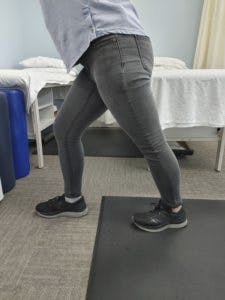
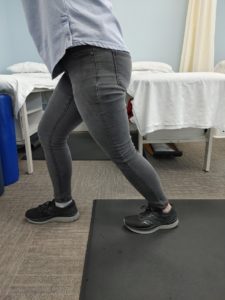
Plantar Roll out (golf ball or frozen water bottle)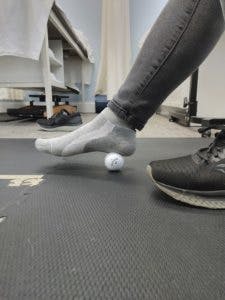
Arch Raises (starting position)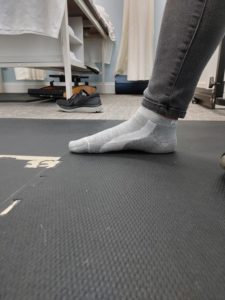
Arch Raises (ending position)
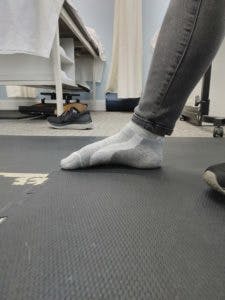
Please consult your Doctor or Physical Therapy team prior to attempting any of these exercises. We sincerely hope this post helped to expand your understanding of plantar fasciitis and what you can do on your own to treat and manage your symptoms.
